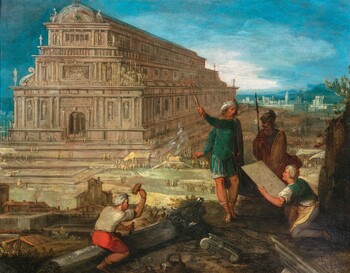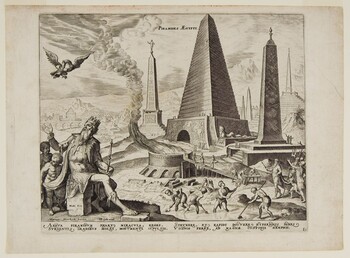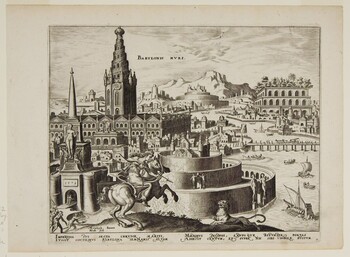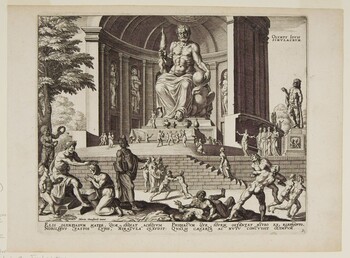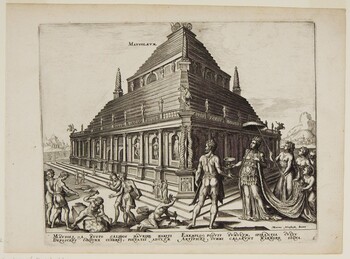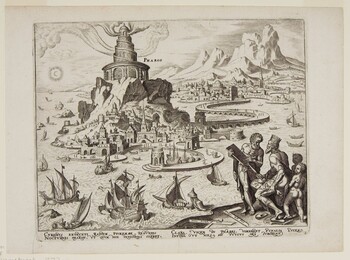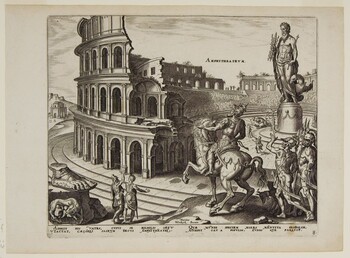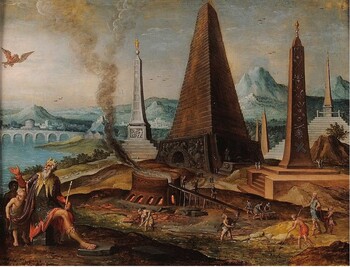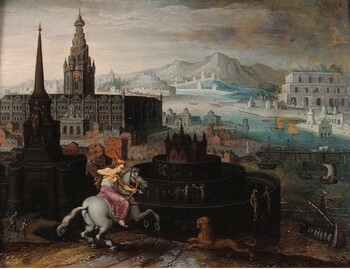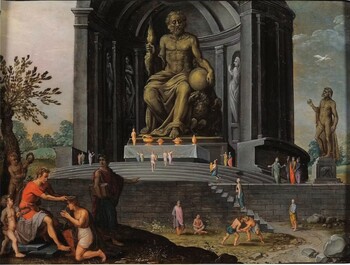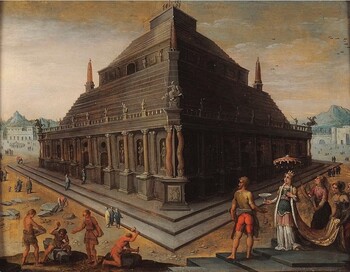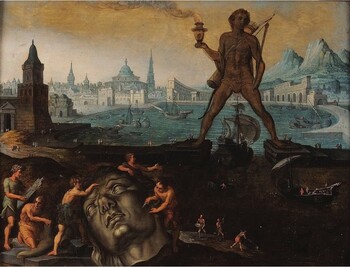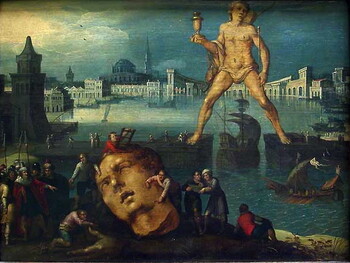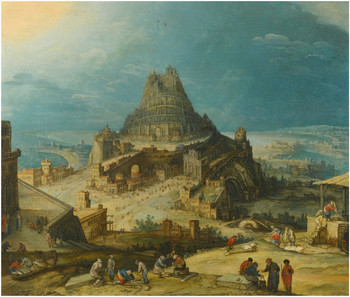5000 €
One of the Seven Wonders of the Ancient World, the Temple of Artemis at Ephesus
Oil on panel : 33,4 X 32,5 cm
Unsigned
Frame : 50,6 X 58,8 cm
In short
In the first quarter of the 17th century several Antwerp painters, mostly anonymous followers of Maarten van Heemskerck, copied one or several engravings by the Dutch master, who had made a grand series of the Seven Wonders of the Ancient World (plus of the Colosseum of Rome).
Van Heemskerck had lived for a few years in Rome, during the 1530s: his knowledge of archaeology and mythology was profound.
About Maarten van Heemskerck
Dutch painter and engraver
Heemskerck 1498 – 1574 Harlem
The village of Heemskerck lays halfway between Alkmaar and Haarlem.
His real name was Maerten van Veen.
Pupil of the Renaissance painter Jan van Scorel in Haarlem.
Between 1532 and 1536 van Heemskerck travelled and worked in Italy, settling in Rome. He was obsessed by archaeology and by the nudes of Michelangelo: he made numerous sketches of antique ruins and sculptures, and of the Sistine Ceiling, that would serve as a source of inspiration for his later mythological, allegorical and biblical scenes.
After his return in Holland he lived again in Haarlem, where he had a long and very successful career.
The Boijmans van Beuningen Museum in Rotterdam has held from February until June 2012 an interesting exhibition entitled “Maarten van Heemskerck – Ancient Rome Relives”.
About van Heemskerck’s Wonders of the World
Maarten van Heemskerck produced designs for a famous set of engravings representing the Seven Wonders of the Ancient World:
- The Great Pyramid of Giza
- The Hanging Gardens of Babylon
- The Temple of Artemis at Ephesus
- The Statue of Zeus at Olympia
- The Mausoleum at Halicarnassus
- The Colossus of Rhodes
- The Lighthouse of Alexandria
- Plus, in addition to this conventional list van Heemskerck added the Colosseum in Rome.
Strangely enough the Seven Wonders were restored by him in their ancient greatness, while the Colosseum, which he saw in real, he depicted as the ruin that it was, with the speculative addition of a giant statue of Jupiter in the centre.
The eight drawings were engraved by Philips Galle (Haarlem 1537 - 1612 Antwerp) and published in 1572. All of them have the double signature of both artists, van Heemskerck as “inventor”, Galle as the engraver (“fecit”).
Circa 1600 several Flemish painters from Antwerp were inspired by a single or by more engravings of this series. Several of these paintings have been erroneously attributed to the Flemish painter Louis de Caullery.
The Palatine Gallery in the Pitti Palace in Florence holds a series of Seven Wonders, dated 1611, by the Flemish painter Bernard Rantwijck. He must have painted it for the Medici family of Florence, although he was active in Siena for the Chigi and Piccolomini families. Rantwijck did replace the Lighthouse of Alexandria by the Colosseum of Rome.
These views of the Seven or Eight Wonders of the Ancient World must be placed next to representations of the infamous Tower of Babel, the most emblematic subject of Flemish Humanist painting of the second half of the 16th and first quarter of the 17th century. The first book Genesis in the Bible tells how God was angry at man for trying to build a tower that would reach into heaven. He created therefore all sorts of different languages so that the builders could no longer understand each other; the tower was never finished. An important number of paintings representing the Tower of Babel used to be attributed to Hendrick van Cleve III, although none of them is signed. It is known today that these paintings were made in the last quarter of the 16th and the first quarter of the 17th century by yet unidentified painters.
Why should you buy this painting?
Because it is a great representation of one of the marvels of Antiquity.
Comparative paintings
Click photos for more details



